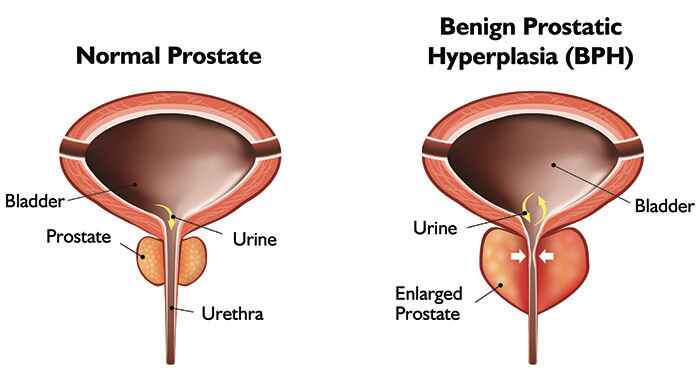A Comprehensive Guide to Benign Prostate Hyperplasia (BPH) Treatment
Benign Prostate Hyperplasia Treatment (BPH), a common condition affecting aging men, involves the enlargement of the prostate gland, leading to various urinary symptoms. While Benign Prostate Hyperplasia Treatment (BPH) is not cancerous, it can significantly impact the quality of life. This comprehensive guide explores the causes, symptoms, and various treatment options available for benign prostate hypertrophy treatment, providing valuable insights to help individuals make informed decisions about managing this condition.
Understanding Benign Prostate Hyperplasia Treatment (BPH):
- Causes and Risk Factors: Benign Prostate Hyperplasia Treatment (BPH) is primarily age-related and occurs due to the natural growth of the prostate over time. Other factors, such as family history, hormonal changes, and lifestyle choices, may contribute to the development of Benign Prostate Hyperplasia Treatment (BPH). Understanding these factors is essential for both prevention and treatment strategies.
- Symptoms of BPH: BPH can manifest with a range of urinary symptoms, including:
- Frequent urination, especially at night (nocturia)
- Urgency to urinate
- Weak or interrupted urine stream
- Difficulty initiating urination
- Incomplete emptying of the bladder
Recognizing these symptoms early is crucial for timely intervention and effective management.
Treatment Options for Benign Prostate Hyperplasia Treatment (BPH):
- Watchful Waiting: In cases where symptoms are mild or not significantly affecting the individual’s quality of life, a watchful waiting approach may be adopted. Regular monitoring, lifestyle modifications, and periodic check-ups are essential components of this strategy.
- Lifestyle Modifications: Certain lifestyle changes can contribute to managing Benign Prostate Hyperplasia Treatment (BPH) symptoms. These include:
- Limiting fluid intake, especially before bedtime
- Reducing caffeine and alcohol consumption
- Regular exercise, which may help improve urinary function
- Maintaining a healthy weight
Incorporating these changes can positively impact overall prostate health.
- Medications: Several medications are commonly prescribed for managing Benign Prostate Hyperplasia Treatment (BPH) symptoms:
- Alpha-Blockers: Relax muscles in the prostate and bladder neck, improving urine flow.
- 5-Alpha Reductase Inhibitors: Reduce the size of the prostate gland over time, relieving symptoms.
- Combination Therapy: A combination of alpha-blockers and 5-alpha reductase inhibitors may be prescribed for enhanced efficacy.
Medications are effective in many cases, but long-term adherence is crucial for sustained relief.
- Minimally Invasive Procedures: For individuals with moderate to severe symptoms who do not respond well to medications, minimally invasive procedures may be recommended. These include:
- Transurethral Microwave Thermotherapy (TUMT): Uses microwave energy to shrink the prostate.
- Transurethral Needle Ablation (TUNA): Involves radiofrequency energy to reduce prostate size.
- Prostatic Urethral Lift (UroLift): Lifts and holds the enlarged prostate tissue, relieving the obstruction.
These procedures provide an effective middle ground between medications and surgery, offering lasting relief with minimal invasiveness.
- Surgery (Transurethral Resection of the Prostate – TURP): TURP is a traditional surgical procedure used to treat severe cases of Benign Prostate Hyperplasia Treatment (BPH). During this procedure, portions of the prostate causing obstruction are removed, improving urine flow. While effective, TURP involves a longer recovery period and may be associated with more risks compared to minimally invasive alternatives.
- Emerging Therapies: Ongoing research and advancements in medical science continue to explore new therapies for Benign Prostate Hyperplasia Treatment (BPH). These may include:
- Water Vapor Thermal Therapy (Rezum): Involves injecting steam into the prostate to shrink excess tissue.
- Aquablation: Utilizes a high-velocity waterjet to remove prostate tissue, providing precise and controlled results.
Emerging therapies aim to offer effective alternatives with improved outcomes and reduced side effects. Vitalee Nanomed offers both liquid and capsule versions.
Choosing the Right Benign Prostate Hyperplasia Treatment (BPH) Approach:
- Individualized Care: The optimal benign prostate hypertrophy treatment approach is highly individualized. Factors such as the severity of symptoms, overall health, and personal preferences play a crucial role in determining the most suitable treatment option.
- Shared Decision-Making: Engaging in shared decision-making with healthcare providers is essential. Patients should openly discuss their symptoms, concerns, and treatment preferences with their healthcare team, allowing for informed decisions that align with their lifestyle and goals.
- Consideration of Side Effects: Each Benign Prostate Hyperplasia Treatment (BPH) option carries its own set of potential side effects. Understanding these side effects and weighing them against the expected benefits is crucial in the decision-making process.
- Long-Term Outlook: Considering the long-term outlook is essential. Some Benign Prostate Hyperplasia Treatment (BPH) options may provide immediate relief, while others may offer sustained benefits over time. Patients should discuss the anticipated outcomes and long-term implications of each treatment option with their healthcare provider.
Conclusion:
Benign Prostate Hyperplasia Treatment (BPH) is a common condition that can significantly impact the quality of life for aging men. Navigating the treatment options for benign prostate hypertrophy treatment requires a thorough understanding of the individual’s symptoms, preferences, and overall health. From watchful waiting and lifestyle modifications to medications, minimally invasive procedures, and surgery, there are various approaches available. Engaging in open communication with healthcare providers, actively participating in shared decision-making, and considering the long-term outlook are key elements in the journey toward effective Benign Prostate Hyperplasia Treatment (BPH) management.
